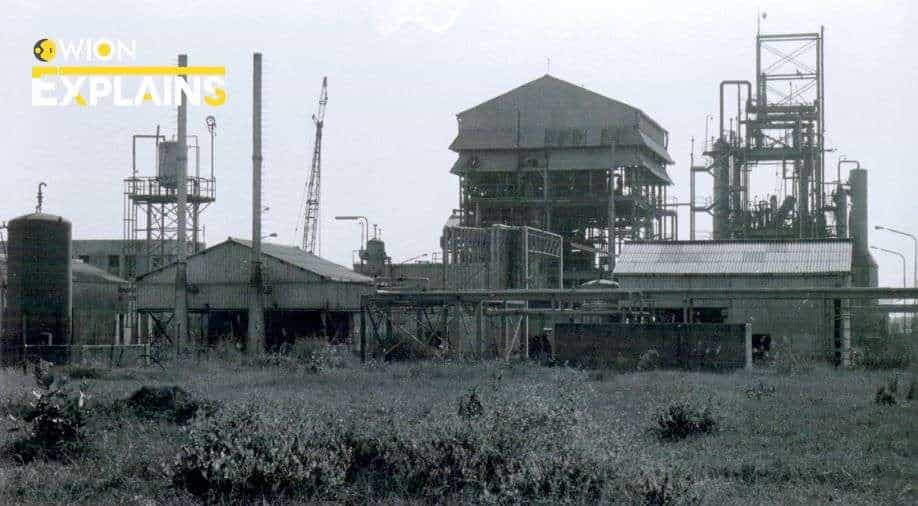Explained | Bhopal gas leak: Unforgiving aftermath of the world's worst industrial disaster, 39 years on
Story highlights
In December 1984, Bhopal faced a devastating industrial disaster as 40 tons of lethal methyl isocyanate (MIC) gas leaked from the Union Carbide India Limited pesticide factory, affecting nearly half a million residents.
Shortly after midnight on December 3, 1984, the central Indian city of Bhopal became the stage for one of the most devastating industrial disasters in history.
In the quiet of the night, approximately 40 tonnes of lethal methyl isocyanate (MIC) gas leaked from a pesticide factory named Union Carbide India Limited, creating a deadly cloud that drifted across the city. The aftermath of this catastrophic event had immediate and lasting consequences, affecting nearly half a million residents.
Around midnight, a chemical reaction was initiated within the UCIL pesticide plant, resulting in the release of methyl isocyanate (MIC) gas. This toxic gas escaped from one of the factory's storage tanks, exposing over half a million people to the hazardous substance and turning the city into a nightmarish gas chamber.
#WATCH | On the anniversary of the 1984 Bhopal Gas tragedy, Madhya Pradesh CM SS Chouhan says, "Such a tragedy should never get repeated. To make sure of this, there should be a balance between development and the environment. I pay my tributes to the victims of this tragedy." pic.twitter.com/NjGJ39iN6x
— ANI (@ANI) December 3, 2023
What was the MIC leak mechanism?
trending now
The UCIL plant featured three underground liquid MIC storage tanks, each with a capacity of 68,000 liters. The leak, originating from Plant Number C, involved the release of MIC gas mixed with water used for cooling purposes. The heightened pressure on the tank caused the discharge of several tons of toxic MIC gas, primarily emanating from tank E610.
A multigenerational impact
Decades later, a comprehensive study has shed light on the enduring repercussions of the Bhopal gas leak.
Supported by the Bill and Melinda Gates Foundation, this research brings to the fore the effects reach far beyond the immediate victims, impacting the generation conceived during the disaster.
Born in 1985, people in Bhopal faced elevated risks of cancer, diminished educational achievements, and higher rates of disabilities compared to those born before or after 1985.
In utero exposure: A disturbing connection
The study pioneers in establishing a direct link between the industrial disaster and adverse outcomes for children in utero.
Men born in Bhopal in 1985 not only experienced a skewed sex ratio in their birth cohort but also encountered heightened vulnerabilities in health, education, and employment throughout their lives.
The findings, considered among the first to demonstrate this link, underscore the profound impact of industrial disasters on future generations.
Contrary to previous assumptions, the study challenges the geographical scope of the disaster's impact.
While earlier investigations focused on populations residing a few miles from the factory, this study suggests that individuals up to 62 miles away suffered consequences.
The widened radius underscores the far-reaching, pervasive nature of the Bhopal tragedy and the need for a more comprehensive understanding of its geographical impact.
Survivor's testimony: Rehana Bi's story
Rehana Bi, a survivor of the Bhopal gas leak, provides a poignant firsthand account of the harrowing night to NPR when the toxic gas permeated her neighbourhood.
Her family, including her pregnant mother, faced the immediate and devastating effects of the gas.
Tragically, by the day's end, Bi lost her parents and her 3-year-old brother. Almost four decades later, she continues to grapple with health issues, stressing upon the persistent challenges faced by survivors and their families in the aftermath of the disaster.
Impact on future generations
While previous studies focused on those directly exposed to MIC, the new research takes a broader approach using data from the National Family Health Survey.
This method reveals a previously unnoticed consequence—the altered sex ratio in the 1985 birth cohort, hinting at potential long-term health and socio-economic impacts on those born during the disaster.
The study stresses that the implications of in-utero exposure extend beyond health, influencing individuals' overall well-being.
The 1985 birth cohort not only faces higher cancer rates but also reports increased disabilities preventing employment.
Causation vs correlation
While the study establishes compelling associations, it falls short of proving causation.
Factors like limited access to healthcare and aid post-disaster could contribute to the observed long-term impacts.
Nevertheless, it stands as a pivotal observational study raising critical questions about the responsibility owed to future generations affected by industrial disasters.
The study's findings contribute to an ongoing discourse about the ethical responsibilities owed to individuals not yet born during industrial disasters.
The Bhopal tragedy prompts reflection on the broader implications for policy, corporate responsibility, and compensation for the enduring impact on future generations.
Unmet compensation and hope for change
Despite the mounting evidence of intergenerational impacts, survivors of the Bhopal disaster continue to face challenges.
A study conducted by the Indian Council of Medical Research in 2016, revealing heightened risks of birth defects, remains entangled in controversy.
The lack of compensation for children in utero or born post-disaster persists as an unresolved issue, as survivors seek acknowledgement and redress for the ongoing consequences of the tragedy.
As the world grapples with industrialisation and its potential environmental hazards, the Bhopal tragedy serves as a poignant reminder of the far-reaching and enduring effects on multiple generations.
(With inputs from agencies)

















